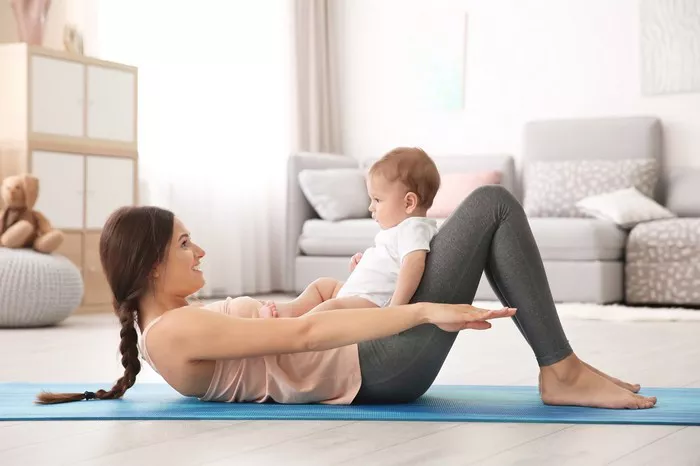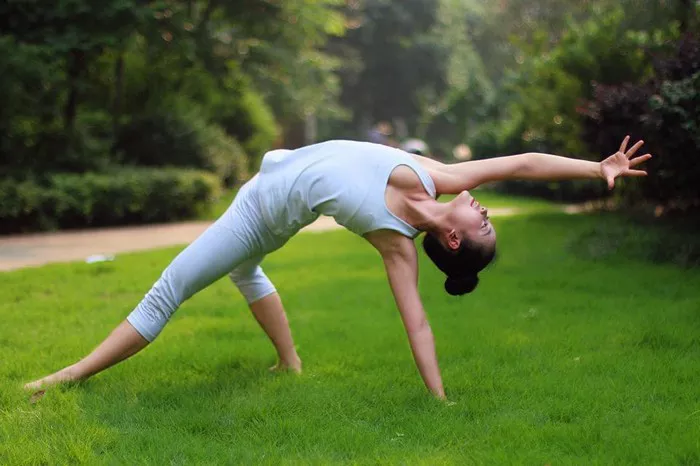Yoga, in its diverse forms, offers a wide range of benefits to both the body and mind. Among the various types, Yin Restorative Yoga has gained significant popularity for its calming and therapeutic effects. It is a practice that emphasizes slowing down, relaxing the body, and cultivating deep awareness. But what exactly is Yin Restorative Yoga, and how can it benefit your body and mind? In this article, we will explore the foundations of this practice, its key principles, the differences between Yin and Restorative Yoga, and how it can improve both physical and emotional well-being.
The Basics of Yin Restorative Yoga
Yin Restorative Yoga is a gentle, slow-paced form of yoga that combines elements of Yin Yoga and Restorative Yoga. To understand this practice, it is essential to first break down these two components:
Yin Yoga: A Slow and Deep Stretch
Yin Yoga, which has its roots in Traditional Chinese Medicine (TCM), involves holding passive, floor-based postures for extended periods, typically between 3 to 5 minutes or more. The practice targets the deeper connective tissues of the body, such as ligaments, tendons, and fascia, rather than focusing on muscles as in more dynamic forms of yoga.
In Yin Yoga, the goal is to stretch these tissues gently and to bring the body into a state of stillness, allowing gravity to assist in the deepening of the stretches. It’s about surrendering to the pose and cultivating a sense of calm and mindfulness. The poses are held for long durations to promote flexibility, increase the flow of energy, and release emotional blockages.
Restorative Yoga: Deep Relaxation and Recovery
Restorative Yoga, on the other hand, is a practice that focuses on complete relaxation and recovery. In Restorative Yoga, the body is fully supported using props like bolsters, blankets, and blocks, allowing practitioners to ease into the postures without any strain. The primary aim of Restorative Yoga is to activate the parasympathetic nervous system, helping the body and mind to enter a state of deep rest and rejuvenation. Unlike Yin Yoga, which involves a degree of stretching, Restorative Yoga is primarily about rest, relaxation, and allowing the body to release tension.
Combining Yin and Restorative Elements
When these two practices—Yin and Restorative Yoga—are combined, Yin Restorative Yoga becomes a practice focused on gentle stretching and deep relaxation. It blends the principles of holding postures for extended periods (from Yin Yoga) with the use of props for comfort and support (from Restorative Yoga). This combination allows practitioners to experience the benefits of both deep stretching and profound relaxation.
Key Principles of Yin Restorative Yoga
While Yin Restorative Yoga combines elements from two distinct practices, it also has some core principles that guide the practice. These include:
1. Slow Pace and Mindfulness
In Yin Restorative Yoga, the practice unfolds at a slow, deliberate pace. The focus is on being fully present in the moment, whether it’s through deep breathing, mindful awareness of the body, or cultivating a sense of calm. Practitioners are encouraged to stay present and observe their thoughts, feelings, and physical sensations without judgment.
2. Holding Poses for Extended Periods
Unlike more active styles of yoga, in Yin Restorative Yoga, the postures are held for a much longer duration, typically ranging from 3 to 10 minutes. This extended time allows the body to gradually deepen into the pose and encourages the release of tension. The duration of each pose enables practitioners to access deeper layers of the body and mind, allowing for greater flexibility, improved circulation, and emotional release.
3. Use of Props for Support
Props such as blankets, bolsters, blocks, and straps are integral to Yin Restorative Yoga. These props support the body in the postures, ensuring that the practitioner can relax into the pose without strain or discomfort. By providing extra support, props allow for a deeper sense of relaxation, helping practitioners to surrender into the posture and remain still for longer periods.
4. Emphasis on the Mind-Body Connection
One of the fundamental aspects of Yin Restorative Yoga is the integration of the mind and body. Practitioners are encouraged to connect deeply with their physical sensations and their breath. The long-held postures offer an opportunity to observe any discomfort or resistance in the body and mind. By practicing acceptance and non-judgment, practitioners can learn to release mental and emotional blockages, fostering a deeper sense of emotional balance and well-being.
5. Focus on the Lower Body and Connective Tissues
Yin Restorative Yoga typically targets the lower body, focusing on the hips, pelvis, thighs, and spine. These areas tend to hold significant amounts of tension, especially in modern lifestyles where people spend long hours sitting. By applying gentle pressure to these areas through long-held stretches, Yin Restorative Yoga helps to release deep-seated tension and improve flexibility in the connective tissues.
The Difference Between Yin and Restorative Yoga
Although Yin and Restorative Yoga are often used together, there are some key differences between the two:
1. Purpose and Intensity
Yin Yoga: The main goal of Yin Yoga is to stretch and target the connective tissues, primarily by holding postures for extended periods. The intensity of Yin Yoga varies, but it often involves a degree of sensation in the body (such as mild discomfort), especially when targeting tight connective tissues.
Restorative Yoga: Restorative Yoga, on the other hand, is all about relaxation and gentle restoration. The intensity is very low, with no stretching or strain involved. Instead, the focus is on deep relaxation through supported postures that help activate the parasympathetic nervous system.
2. Postures and Props
Yin Yoga: While props can be used in Yin Yoga to enhance the practice, the postures are generally more intense and focused on stretching the deeper connective tissues. The poses often involve more active engagement of the muscles to maintain alignment and depth.
Restorative Yoga: Restorative Yoga relies heavily on props, often using them to fully support the body in each pose. The poses are typically passive and involve little to no muscular engagement.
3. Emotional Experience
Yin Yoga: Due to the deeper physical stretches, Yin Yoga can sometimes provoke intense emotional releases. The long-held postures allow for deep introspection and can bring up stored emotions or past experiences.
Restorative Yoga: Restorative Yoga is more soothing and nurturing, offering an emotional experience that emphasizes tranquility, healing, and restoration.
Benefits of Yin Restorative Yoga
1. Improved Flexibility
One of the primary benefits of Yin Restorative Yoga is increased flexibility. By holding postures for long durations, the practice targets the connective tissues, helping to lengthen them and increase range of motion in the joints. Over time, this can improve flexibility, especially in areas that are prone to tightness, such as the hips, lower back, and thighs.
2. Stress Relief and Relaxation
Yin Restorative Yoga activates the parasympathetic nervous system, which helps the body enter a state of deep relaxation. By promoting relaxation and mindfulness, this practice can reduce stress levels, lower anxiety, and improve emotional well-being. It is particularly beneficial for individuals dealing with high levels of stress or those who struggle with finding time to rest.
3. Better Posture and Alignment
The long-held poses in Yin Restorative Yoga help to release tension in the muscles and connective tissues, which can improve posture and alignment. By creating more space in the body and increasing flexibility, the practice encourages better spinal alignment and helps to reduce pain or discomfort caused by poor posture.
4. Pain Relief
For individuals dealing with chronic pain or discomfort, Yin Restorative Yoga can be an effective way to release tension in the body. The deep stretching of connective tissues, combined with the gentle nature of the practice, can help alleviate pain, particularly in areas such as the lower back, hips, and shoulders.
5. Emotional Healing
Yin Restorative Yoga provides a safe space for emotional healing. The stillness of the practice allows individuals to connect with their emotions, release stored tension, and process feelings that may have been suppressed. This can lead to greater emotional balance, resilience, and a sense of inner peace.
6. Improved Sleep Quality
As a calming and restorative practice, Yin Restorative Yoga can improve the quality of sleep. By reducing stress and promoting relaxation, it helps prepare the body and mind for restful sleep. Individuals who struggle with insomnia or disrupted sleep patterns may find significant benefits from regular practice.
7. Mental Clarity and Focus
The mindfulness aspect of Yin Restorative Yoga helps cultivate mental clarity and focus. As practitioners hold each posture and bring awareness to their breath, they develop the ability to quiet the mind and center themselves. This improved focus can carry over into daily life, leading to enhanced concentration and mental clarity.
How to Practice Yin Restorative Yoga
1. Create a Calm Environment
Set up a quiet, comfortable space for your practice. Dim the lights, play soft, soothing music if desired, and arrange your props (bolsters, blocks, blankets) nearby.
2. Choose the Right Poses
Begin with poses that target areas where you hold tension, such as the hips, lower back, and shoulders. Some common poses in Yin Restorative Yoga include:
Butterfly Pose (Baddha Konasana): Great for stretching the hips and inner thighs.
Supported Child’s Pose (Balasana): A gentle rest for the back and hips.
Reclining Pigeon Pose (Supta Kapotasana): Helps open the hips and release tension in the lower back.
Supported Savasana: A final resting pose that promotes deep relaxation.
3. Focus on Your Breath
Throughout the practice, bring attention to your breath. Inhale slowly and deeply through your nose, and exhale through your mouth or nose. Let your breath guide you deeper into each posture, helping to release any tension.
4. Use Props for Support
Don’t hesitate to use props to make the poses more comfortable. Use bolsters, blankets, or blocks to support your body and allow you to relax fully into each posture.
5. Practice Patience and Stillness
The beauty of Yin Restorative Yoga lies in the stillness. Allow yourself to be present in the moment and resist the urge to fidget or rush through the postures. Stay in each pose for several minutes, breathing deeply and allowing your body to soften and release.
Conclusion
Yin Restorative Yoga offers a unique approach to yoga, blending deep stretching and relaxation with mindfulness and emotional healing. By holding postures for extended periods, using props for support, and focusing on breath and awareness, this practice offers a deep sense of rest and rejuvenation. Whether you’re looking to improve flexibility, reduce stress, or promote emotional healing, Yin Restorative Yoga provides a nurturing and transformative experience for the body, mind, and spirit. So, take a moment to slow down, breathe, and embrace the healing power of this gentle yet profound practice.
Related Topics:

























